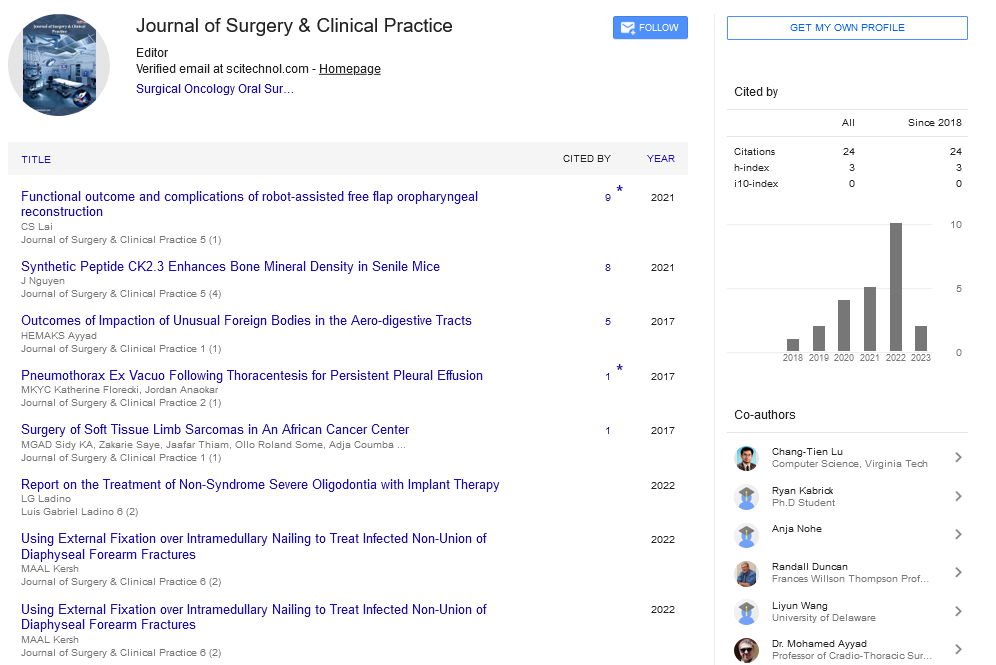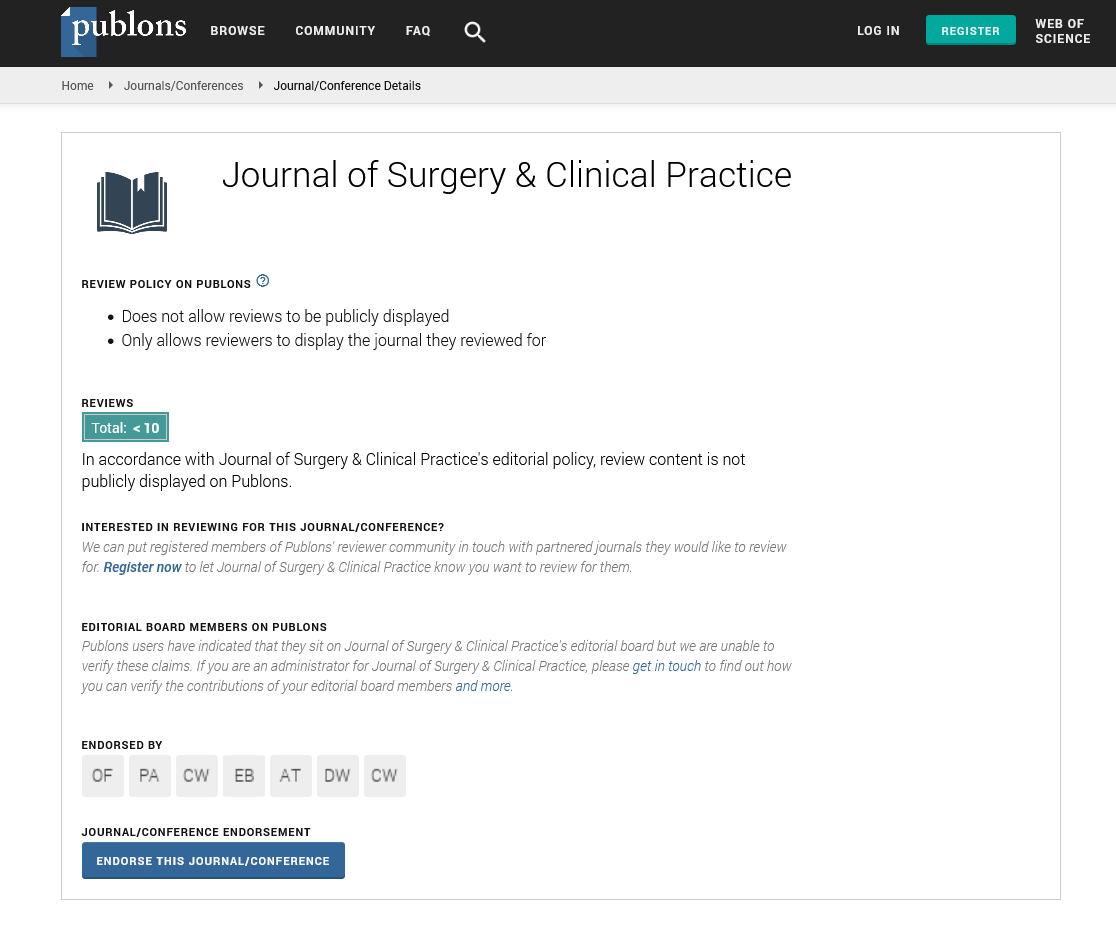Commentary, J Surg Clin Prac Vol: 7 Issue: 2
Innovative Technologies and Surgical Approaches in Plastic and Reconstructive Surgery
Jonathan Carter*
Department of Plastic and Reconstructive Surgery, University of North Carolina, North Carolina, USA
*Corresponding Author: Jonathan Carter
Department of Plastic
and Reconstructive Surgery, University of North Carolina, North Carolina, USA
E-mail: jonathan@hottmail.com
Received date: 23 May, 2023, Manuscript No. JSCP-23-107202;
Editor assigned date: 26 May, 2023, PreQC No. JSCP-23-107202 (PQ);
Reviewed date: 12 June, 2023, QC No. JSCP-23-107202;
Revised date: 19 June, 2023, Manuscript No. JSCP-23-107202 (R);
Published date: 26 June, 2023 DOI: 10.35248/JSCP.23.7.100385
Citation: Carter J (2023) Innovative Technologies and Surgical Approaches in Plastic and Reconstructive Surgery. J Surg Clin Prac 7:2.
Description
Plastic and reconstructive surgery is a specialized branch of medicine dedicated to restoring form, function, and aesthetics to various parts of the body. Over the years, this field has witnessed remarkable advancements, thanks to innovative techniques, technologies, and surgical approaches. Microsurgery has been a groundbreaking innovation in plastic and reconstructive surgery. It involves the use of high-powered microscopes, specialized instruments, and delicate suturing techniques to reattach or transplant small blood vessels and nerves. Microsurgical procedures have enabled complex tissue flap reconstructions, where healthy tissues, such as skin, muscle, or bone, are transferred from one area of the body to another to reconstruct defects caused by trauma, cancer resections, or congenital abnormalities. These advancements have significantly improved the functional and aesthetic outcomes of reconstructive procedures.
Fat grafting is also known as fat transfer or lipofilling has gained prominence in recent years. It involves removing fat from one area of the body, purifying it and then injecting it into another area to restore volume and contour. Fat grafting offers natural and long-lasting results and has become an essential component of facial rejuvenation, breast augmentation, and body contouring procedures. Moreover, regenerative medicine techniques, such as Platelet-Rich Plasma (PRP) therapy and stem cell therapy, are being explored to enhance tissue healing, promote regeneration, and optimize aesthetic outcomes. The advent of 3D printing technology has revolutionized the field of plastic and reconstructive surgery. It enables the creation of patient-specific implants, prosthetics, and surgical guides based on precise anatomical measurements. Custom implants can be used to match the patient's unique facial or body structure, resulting in improved aesthetic outcomes and better functional restoration. Furthermore, 3D printing facilitates surgical planning, allowing surgeons to simulate procedures and enhance surgical precision.
In addition to surgical interventions, nonsurgical aesthetic procedures have become increasingly popular in plastic and reconstructive surgery. Minimally invasive techniques, such as injectables (botulinum toxin, dermal fillers), laser treatments, and skin resurfacing, offer patients the opportunity to achieve aesthetic improvements without undergoing surgery. These procedures are less invasive, have minimal downtime, and can effectively address various concerns, including wrinkles, volume loss, and skin texture irregularities. Virtual Reality (VR) and Augmented Reality (AR) technologies have found applications in plastic and reconstructive surgery. VR allows patients to visualize potential outcomes before undergoing surgery, improving communication between patients and surgeons and enhancing patient satisfaction. AR is utilized in the operating room, providing surgeons with real-time guidance and visualization during complex procedures. These technologies contribute to more precise surgical planning, better intraoperative decision-making, and improved surgical outcomes.
Gender-affirming surgery, also known as gender confirmation surgery or sex reassignment surgery is an important area within plastic and reconstructive surgery. It aims to align an individual's physical appearance with their gender identity. Innovations in surgical techniques, such as chest masculinization or breast augmentation, facial feminization or masculinization, and genital reconstruction, have significantly improved the outcomes and quality of life for transgender individuals seeking gender-affirming procedures. Advancements in scar management techniques have played a significant role in enhancing the aesthetic outcomes of plastic and reconstructive surgery. Innovations such as laser therapy, silicone-based products, microneedling, and surgical techniques that minimize tension on incisions have contributed to reducing the visibility of scars and improving their overall appearance. Effective scar management not only enhances cosmetic results but also promotes psychosocial wellbeing and self-confidence in patients.
 Spanish
Spanish  Chinese
Chinese  Russian
Russian  German
German  French
French  Japanese
Japanese  Portuguese
Portuguese  Hindi
Hindi 
